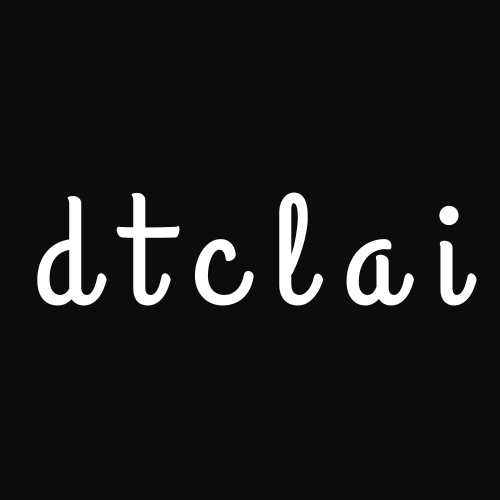
Future-Proof Operations: Choreographing AI, Humans & Legacy
Business Processes Re-engineering with Microservices, Mainframes,Monoliths, Legacy tech, different SaaS AI Agents and Humans
In today's dynamic business landscape, the ability to rapidly adapt and innovate is paramount. Organizations are increasingly looking towards business process re-engineering to streamline operations, enhance customer experiences, and unlock new efficiencies. This often involves a complex interplay of diverse technological components, from modern event-driven asynchronous loosely coupled microservices to established monoliths and legacy mainframes, alongside the burgeoning power of diverse SaaS AI agents and, crucially, the irreplaceable contributions of humans.
Architecting such a hybrid system requires careful consideration, particularly around state preservation and achieving eventual consistency across disparate components. This paper explores the key principles and provides a blueprint for orchestrating this technological symphony.
The Challenge: A Heterogeneous Ecosystem
Imagine a scenario where an e-commerce order triggers a cascade of actions: inventory checks in a legacy mainframe, payment processing via an external SaaS platform, personalised recommendation generation by an AI agent, order fulfilment orchestrated by microservices, and customer communication handled by a human agent. Each component operates with its own data model, communication style, and pace.
The core challenges in such an environment are:
- Maintaining State: How do we track the progress of a business process that spans multiple independent systems? Losing track of the "order state" can lead to inconsistencies and errors.
- Ensuring Consistency: With asynchronous communication, how do we guarantee that all relevant systems eventually reflect the final outcome of the business process? We need to manage the inherent delays and potential failures.
- Orchestration Complexity: Coordinating the flow of information and actions across this diverse landscape can become a significant architectural hurdle.
The Solution: Embrace Choreography and Eventual Consistency
Instead of a central orchestrator tightly coupling all components, a choreographed architecture offers a more resilient and scalable approach. In this model, each service and agent reacts to relevant business events, independently performing its designated task.
Key Principles for Architecting the Symphony:
-
Event-Driven Architecture (EDA): Make business events the central nervous system. When a significant action occurs (e.g., "OrderCreated," "PaymentProcessed," "InventoryUpdated"), an event is published to a message broker. Interested services and agents subscribe to these events and react accordingly. This fosters loose coupling and asynchronous communication.
-
Asynchronous Communication: Favor asynchronous communication patterns (e.g., message queues, event streams) over synchronous request-response. This prevents one slow or failing service from blocking the entire process and allows for better scalability and resilience.
-
Idempotency: Design services and AI agents to handle the same event multiple times without unintended side effects. This is crucial for dealing with potential message re delivery in distributed systems.
-
State Preservation Strategies:
- Database per Service: Each microservice maintains its own database, ensuring data isolation and autonomy.
- Saga Pattern: For long-running, distributed transactions that span multiple services, implement the Saga pattern. This involves a sequence of local transactions, with compensating transactions to rollback changes in case of failure.
- Outbox Pattern: To reliably publish events upon a local database transaction, use the outbox pattern. This involves storing events in the same database as the business data and a separate process polls the outbox to publish the events.
- State Machines: For complex, stateful business processes, consider using state machines to explicitly manage the different stages and transitions.
-
Eventual Consistency: Accept that data across different systems might be temporarily inconsistent. Focus on ensuring that all relevant systems will eventually reach a consistent state. Implement mechanisms for monitoring and reconciliation if inconsistencies persist.
-
Human Task Management: Integrate human involvement seamlessly (& where necessary) into the choreography. When a task requires human intervention, the system should generate a clear notification and provide the necessary context. Upon completion of the human task, an event should be published to trigger the next steps in the process.
-
API Gateways: For external interactions (including SaaS AI agents), utilize API gateways to provide a unified entry point and handle concerns like authentication, rate limiting, and protocol translation.
-
Monitoring and Observability: Implement robust monitoring and logging across all components to track the flow of events, identify bottlenecks, and troubleshoot issues. Distributed tracing can be invaluable for understanding the execution path of a business process across multiple systems.
Architecture Diagram (Conceptual):

Explanation of the Diagram:
- Diverse Systems: The diagram illustrates the coexistence of legacy mainframes, monolithic applications, and modern microservices.
- Event Bus: The central Message Broker acts as the communication backbone, facilitating asynchronous event exchange between all components.
- SaaS AI Agents: AI agents from different platforms interact via API Gateways, which also handle event publication on their behalf.
- Human Actors: Human involvement is triggered by events, and their actions, in turn, generate new events.
- Asynchronous Flow: Arrows indicate the flow of events, highlighting the asynchronous nature of the communication.
Benefits of this Approach:
- Increased Agility: Loose coupling allows individual teams to develop, deploy, and scale their components independently.
- Improved Resilience: Failure in one component is less likely to bring down the entire system.
- Enhanced Scalability: Individual services and AI agents can be scaled based on their specific needs.
- Seamless Integration: Enables the integration of best-of-breed SaaS AI solutions and AI Agents without tightly coupling them to the core systems.
- Better User Experience: A well-orchestrated system leads to smoother and more efficient business processes, ultimately benefiting the end-user.
Conclusion:
Architecting business process re-engineering initiatives involving a mix of legacy systems, modern microservices, SaaS AI agents, and human actors is a complex but increasingly necessary endeavor. By embracing a choreographed, event-driven architecture and focusing on state preservation and eventual consistency, organizations can unlock significant benefits in terms of agility, resilience, and efficiency. The key lies in understanding the strengths and limitations of each component and orchestrating them into a harmonious symphony that drives business value.
Contact us for your business process re engineering!
